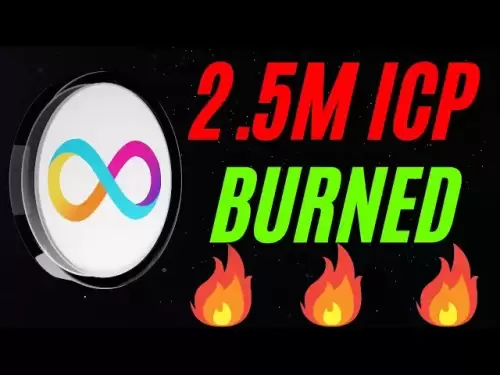-
 Bitcoin
Bitcoin $106,754.6083
1.33% -
 Ethereum
Ethereum $2,625.8249
3.80% -
 Tether USDt
Tether USDt $1.0001
-0.03% -
 XRP
XRP $2.1891
1.67% -
 BNB
BNB $654.5220
0.66% -
 Solana
Solana $156.9428
7.28% -
 USDC
USDC $0.9998
0.00% -
 Dogecoin
Dogecoin $0.1780
1.14% -
 TRON
TRON $0.2706
-0.16% -
 Cardano
Cardano $0.6470
2.77% -
 Hyperliquid
Hyperliquid $44.6467
10.24% -
 Sui
Sui $3.1128
3.86% -
 Bitcoin Cash
Bitcoin Cash $455.7646
3.00% -
 Chainlink
Chainlink $13.6858
4.08% -
 UNUS SED LEO
UNUS SED LEO $9.2682
0.21% -
 Avalanche
Avalanche $19.7433
3.79% -
 Stellar
Stellar $0.2616
1.64% -
 Toncoin
Toncoin $3.0222
2.19% -
 Shiba Inu
Shiba Inu $0.0...01220
1.49% -
 Hedera
Hedera $0.1580
2.75% -
 Litecoin
Litecoin $87.4964
2.29% -
 Polkadot
Polkadot $3.8958
3.05% -
 Ethena USDe
Ethena USDe $1.0000
-0.04% -
 Monero
Monero $317.2263
0.26% -
 Bitget Token
Bitget Token $4.5985
1.68% -
 Dai
Dai $0.9999
0.00% -
 Pepe
Pepe $0.0...01140
2.44% -
 Uniswap
Uniswap $7.6065
5.29% -
 Pi
Pi $0.6042
-2.00% -
 Aave
Aave $289.6343
6.02%
Are there prospects for investing in NFT coins?
Understanding the fundamentals of NFT coins, investors can assess the market potential, identify promising investments, mitigate risks, and develop a comprehensive investment strategy.
Jan 08, 2025 at 01:09 pm
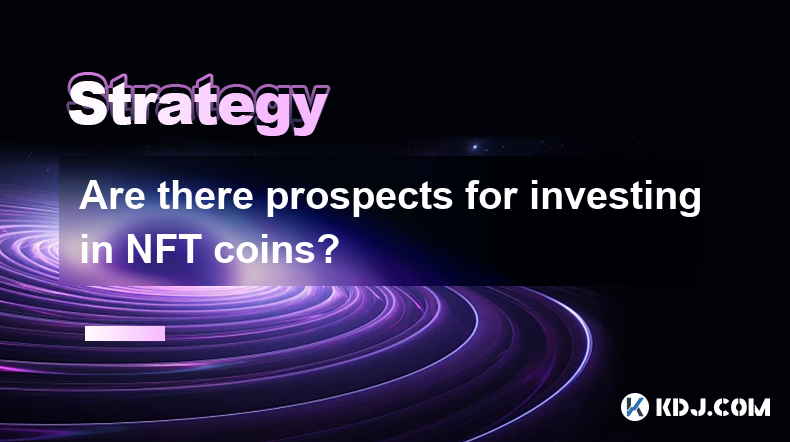
Key Points:
- Understanding the fundamentals of NFT coins
- Assessing the market potential for NFT coins
- Identifying promising investment opportunities
- Understanding the risks associated with NFT coin investments
- Developing an investment strategy for NFT coins
Exploring the Potential of NFT Coins
The emergence of non-fungible tokens (NFTs) has sparked interest in the underlying cryptocurrencies that empower these unique digital assets. NFT coins are the native tokens of platforms that facilitate the creation, trading, and storage of NFTs. Investing in NFT coins offers potential opportunities to capitalize on the growing NFT market.
Understanding the NFT Coin Market
The NFT coin market is diverse, with each platform offering its own unique features and value proposition. Some notable NFT coins include:
- Flow (FLOW): A platform optimized for managing NFTs with low transaction fees and fast processing times.
- Ethereum (ETH): The largest blockchain hosting NFTs, providing a robust ecosystem and established NFT marketplace.
- Polygon (MATIC): A Layer 2 solution for Ethereum that offers scalability and lower transaction costs for NFT transactions.
- Binance Coin (BNB): The native token of the Binance exchange, which supports NFT trading and marketplace services.
- WAX (WAXP): A dedicated blockchain for NFTs, offering fast and cost-effective transactions.
Assessing the Future Prospects of NFT Coins
The future prospects of NFT coins hinge on the growth and adoption of the NFT market. As NFTs gain traction in various industries (e.g., art, collectibles, gaming), the demand for NFT coins may increase. However, it is important to consider factors such as market volatility, regulatory changes, and competition when evaluating investment potential.
Investment Opportunities in NFT Coins
Investing in NFT coins can be approached in several ways:
- Buy-and-Hold: Purchasing NFT coins and holding them long-term in anticipation of price appreciation.
- Trading: Actively buying and selling NFT coins to profit from market fluctuations.
- Yield Farming: Earning passive income by staking NFT coins and participating in liquidity pools.
- Venture Capital: Investing in early-stage NFT coin projects with high potential for growth.
Mitigating Investment Risks
Investing in NFT coins carries risks that should be carefully considered:
- Market Volatility: NFT coin prices can be highly volatile, leading to potential losses.
- Regulatory Uncertainty: Regulatory frameworks for NFTs and NFT coins are still evolving, which can impact their value.
- Scams and Rug Pulls: The NFT coin market can attract fraudulent projects, leading to potential loss of funds.
- Competition: The NFT coin market is competitive, with new platforms emerging regularly.
Building an Investment Strategy for NFT Coins
Developing an investment strategy for NFT coins involves considering the following steps:
- Research and Due Diligence: Thoroughly researching the NFT coin ecosystem and specific projects.
- Risk Management: Establishing a risk tolerance and implementing measures to manage potential losses.
- Diversification: Investing in a range of NFT coins to reduce exposure to individual project risks.
- Active Monitoring: Regularly monitoring NFT coin market trends and adapting strategies accordingly.
FAQs
Q: What are the benefits of investing in NFT coins?
- Potential capital appreciation
- Passive income opportunities
- Involvement in the growing NFT ecosystem
Q: What are the risks of investing in NFT coins?
- Price volatility
- Regulatory uncertainty
- Scams and rug pulls
- Market competition
Q: How can I research potential NFT coin investments?
- Review project whitepapers and roadmaps
- Analyze market trends and news
- Join NFT coin communities and forums
Q: What is the future outlook for the NFT coin market?
The future outlook depends on the growth and adoption of NFTs. Factors to consider include regulatory developments, technological advancements, and industry partnerships.
Disclaimer:info@kdj.com
The information provided is not trading advice. kdj.com does not assume any responsibility for any investments made based on the information provided in this article. Cryptocurrencies are highly volatile and it is highly recommended that you invest with caution after thorough research!
If you believe that the content used on this website infringes your copyright, please contact us immediately (info@kdj.com) and we will delete it promptly.
- 2025-W Uncirculated American Gold Eagle and Dr. Vera Rubin Quarter Mark New Products
- 2025-06-13 06:25:13
- Ruvi AI (RVU) Leverages Blockchain and Artificial Intelligence to Disrupt Marketing, Entertainment, and Finance
- 2025-06-13 07:05:12
- H100 Group AB Raises 101 Million SEK (Approximately $10.6 Million) to Bolster Bitcoin Reserves
- 2025-06-13 06:25:13
- Galaxy Digital CEO Mike Novogratz Says Bitcoin Will Replace Gold and Go to $1,000,000
- 2025-06-13 06:45:13
- Trust Wallet Token (TWT) Price Drops 5.7% as RWA Integration Plans Ignite Excitement
- 2025-06-13 06:45:13
- Ethereum (ETH) Is in the Second Phase of a Three-Stage Market Cycle
- 2025-06-13 07:25:13
Related knowledge
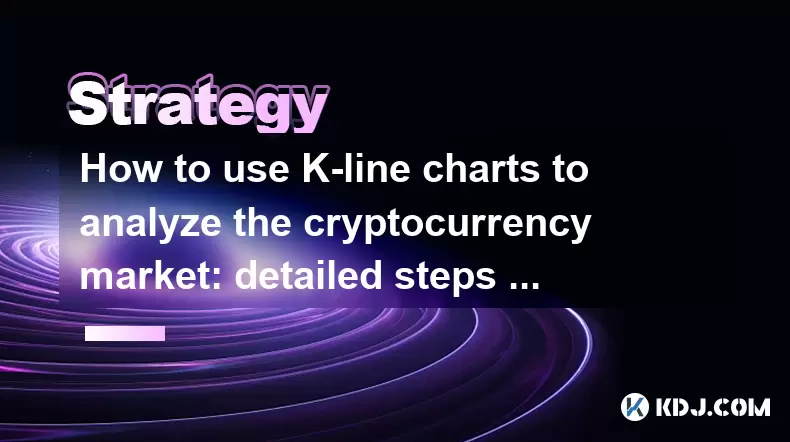
How to use K-line charts to analyze the cryptocurrency market: detailed steps and common misunderstandings
Jun 16,2025 at 01:42pm
Understanding the Basics of K-line Charts in Cryptocurrency TradingK-line charts, also known as candlestick charts, are one of the most widely used tools for analyzing price movements in financial markets, including cryptocurrencies. These charts provide a visual representation of price action over specific time intervals and help traders make informed ...

Cryptocurrency K-line chart technical analysis manual: Learn these methods to increase your chances of making a profit
Jun 11,2025 at 11:21pm
Understanding the Basics of K-line ChartsK-line charts, also known as candlestick charts, are one of the most widely used tools in cryptocurrency trading. Each K-line represents a specific time period and provides information about the open, high, low, and close prices during that interval. The body of the candle shows the relationship between the openi...

The Importance of K-line Chart Analysis in Cryptocurrency Trading: From Theory to Practical Cases
Jun 11,2025 at 04:56pm
Understanding the Basics of K-line ChartsK-line charts, also known as candlestick charts, are a visual representation of price movements over specific time intervals. Each K-line encapsulates four critical data points: the opening price, closing price, highest price, and lowest price within a given timeframe. These charts originated in Japan during the ...

Cryptocurrency K-line Chart Interpretation Guide: How Novices Can Quickly Master the Basics of Technical Analysis
Jun 10,2025 at 08:56pm
Understanding the Basics of K-line ChartsK-line charts, also known as candlestick charts, are one of the most widely used tools in cryptocurrency trading for analyzing price movements. Each K-line represents a specific time period and shows the opening, closing, high, and low prices during that interval. For novices, grasping how to read these elements ...
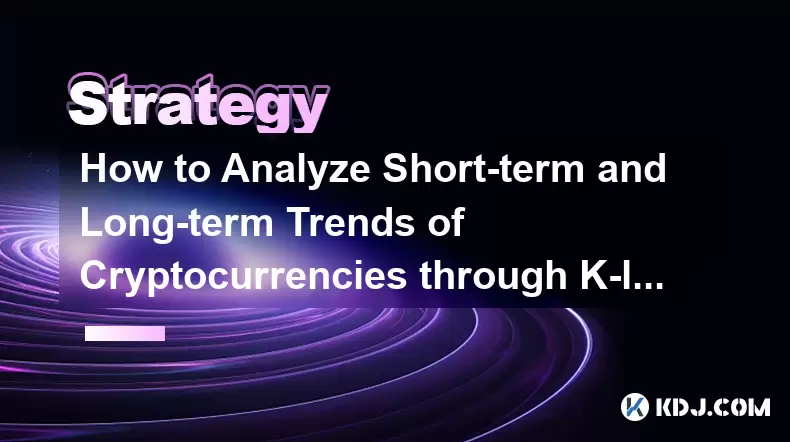
How to Analyze Short-term and Long-term Trends of Cryptocurrencies through K-line Charts: A Complete Guide
Jun 15,2025 at 12:49pm
Understanding the Basics of K-line ChartsK-line charts, also known as candlestick charts, are essential tools used in cryptocurrency trading to visualize price movements over time. Each candlestick represents a specific time interval and contains four key data points: open, high, low, and close. The body of the candle shows the range between the opening...
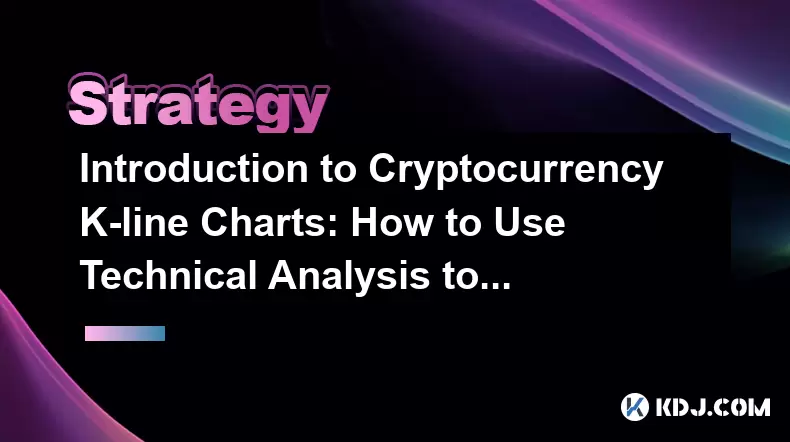
Introduction to Cryptocurrency K-line Charts: How to Use Technical Analysis to Optimize Trading Decisions
Jun 12,2025 at 03:56pm
Understanding the Basics of K-line ChartsK-line charts, also known as candlestick charts, are one of the most essential tools used in cryptocurrency trading. Originating from Japan, these charts visually represent price movements over specific time intervals. Each candlestick displays four key pieces of information: the opening price, closing price, hig...

How to use K-line charts to analyze the cryptocurrency market: detailed steps and common misunderstandings
Jun 16,2025 at 01:42pm
Understanding the Basics of K-line Charts in Cryptocurrency TradingK-line charts, also known as candlestick charts, are one of the most widely used tools for analyzing price movements in financial markets, including cryptocurrencies. These charts provide a visual representation of price action over specific time intervals and help traders make informed ...

Cryptocurrency K-line chart technical analysis manual: Learn these methods to increase your chances of making a profit
Jun 11,2025 at 11:21pm
Understanding the Basics of K-line ChartsK-line charts, also known as candlestick charts, are one of the most widely used tools in cryptocurrency trading. Each K-line represents a specific time period and provides information about the open, high, low, and close prices during that interval. The body of the candle shows the relationship between the openi...

The Importance of K-line Chart Analysis in Cryptocurrency Trading: From Theory to Practical Cases
Jun 11,2025 at 04:56pm
Understanding the Basics of K-line ChartsK-line charts, also known as candlestick charts, are a visual representation of price movements over specific time intervals. Each K-line encapsulates four critical data points: the opening price, closing price, highest price, and lowest price within a given timeframe. These charts originated in Japan during the ...

Cryptocurrency K-line Chart Interpretation Guide: How Novices Can Quickly Master the Basics of Technical Analysis
Jun 10,2025 at 08:56pm
Understanding the Basics of K-line ChartsK-line charts, also known as candlestick charts, are one of the most widely used tools in cryptocurrency trading for analyzing price movements. Each K-line represents a specific time period and shows the opening, closing, high, and low prices during that interval. For novices, grasping how to read these elements ...

How to Analyze Short-term and Long-term Trends of Cryptocurrencies through K-line Charts: A Complete Guide
Jun 15,2025 at 12:49pm
Understanding the Basics of K-line ChartsK-line charts, also known as candlestick charts, are essential tools used in cryptocurrency trading to visualize price movements over time. Each candlestick represents a specific time interval and contains four key data points: open, high, low, and close. The body of the candle shows the range between the opening...

Introduction to Cryptocurrency K-line Charts: How to Use Technical Analysis to Optimize Trading Decisions
Jun 12,2025 at 03:56pm
Understanding the Basics of K-line ChartsK-line charts, also known as candlestick charts, are one of the most essential tools used in cryptocurrency trading. Originating from Japan, these charts visually represent price movements over specific time intervals. Each candlestick displays four key pieces of information: the opening price, closing price, hig...
See all articles























